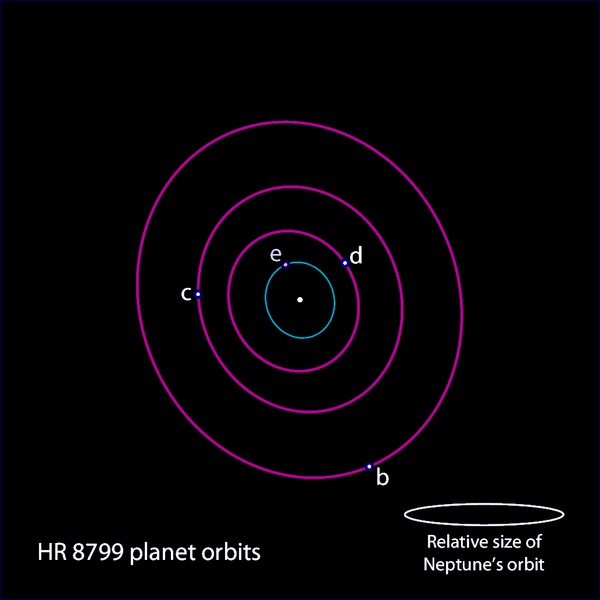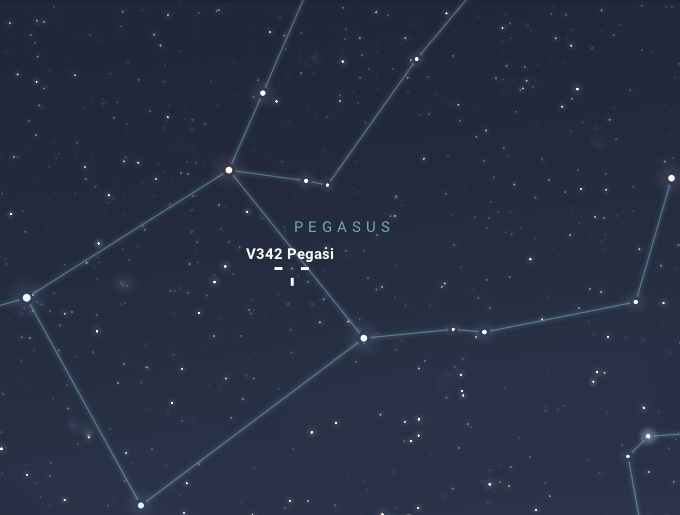HR 8799c is one of the four known exoplanets orbiting the young star HR 8799 in the constellation of Pegasus. Here are some key details about HR 8799c:
Discovery
HR 8799c was discovered in 2008 using direct imaging techniques, similar to HR 8799b and the other two planets in the system. This method involves directly observing the exoplanet itself rather than inferring its presence from its effects on its host star’s light.
Characteristics
HR 8799c is a gas giant exoplanet, akin to Jupiter in our solar system. It possesses a substantial mass, likely several times that of Jupiter, categorizing it as a “super-Jupiter” or “brown dwarf” in size.
Unlike rocky planets, HR 8799c features a thick, turbulent atmosphere with temperatures estimated to be around 1,200°C (2,200°F), contributing to its dynamic weather patterns and potential for cloud formation.
It is estimated that the exoplanet is approximately 30 million years old, rendering it a relatively young star system. HR 8799c’s youthfulness is significant as it indicates that the planet is likely still undergoing formation processes, possibly possessing dynamic atmospheric and surface features.
Atmosphere
HR 8799c’s atmosphere is primarily composed of hydrogen and helium, with significant amounts of water vapor, methane, and possibly ammonia. The presence of these molecules suggests a complex atmospheric chemistry, characterized by the existence of cloud layers that may include both water clouds and clouds of silicates or other compounds.
Through spectroscopic observations of the planet’s atmosphere, scientists can glean valuable information regarding its composition, temperature, and other pertinent properties.
Orbit
The planet orbits its host star, HR 8799, at a considerable distance, similar to HR 8799b and the other planets in the system. Its orbit lies within a region where giant planets are typically found, resembling the outer planets in our solar system.


Observation
Directly imaging exoplanets like HR 8799c presents challenges due to the luminous glare of their host stars. Sophisticated techniques and instruments, such as adaptive optics and coronagraphs, are employed to suppress the star’s light and facilitate the observation of the planet’s faint emission.
HR 8799b cannot be directly observed with standard amateur telescopes as exoplanets are generally far too faint and too close to their parent stars to be resolved with amateur instruments. With a decent pair of binoculars (e.g., 7×50 or 10×50), the parent star HR 8799 should be visible as a faint spot of light. Through a small to medium-sized amateur telescope, HR 8799 will be easily visible as a star.
HR 8799 is located in the constellation Pegasus. It can be seen during the autumn months, especially from September to November, when Pegasus is highest in the night sky.





